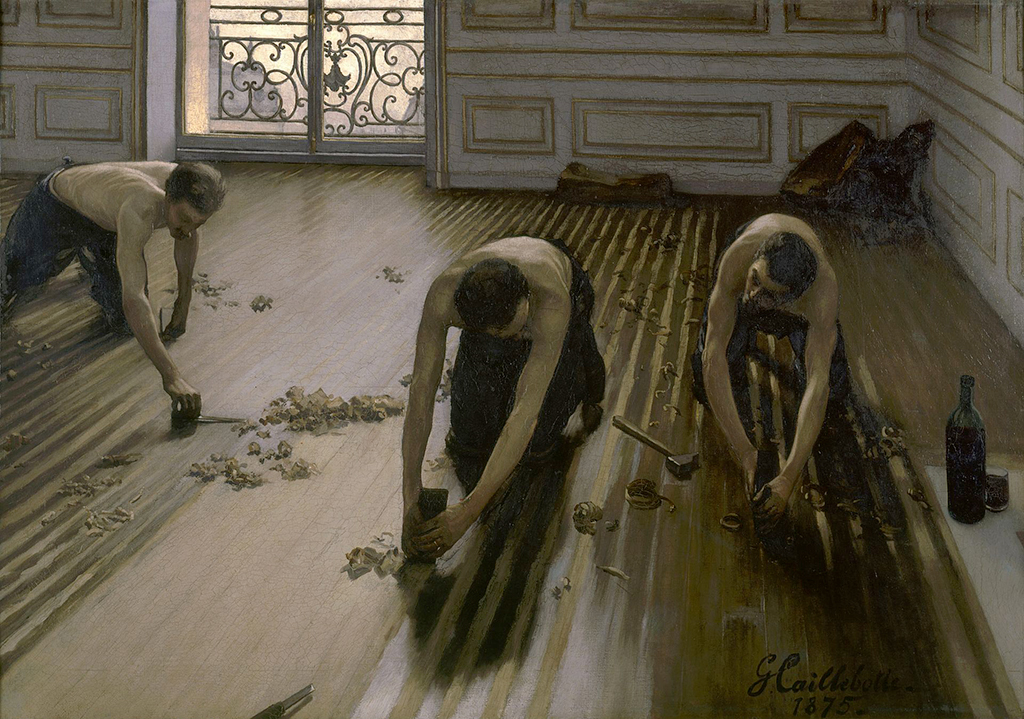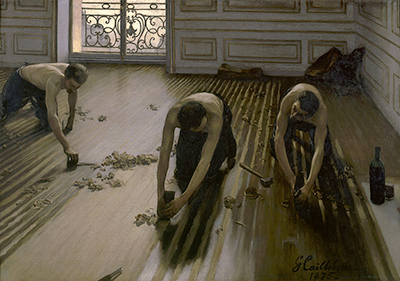The Floor Scrapers can be considered one of Caillebotte's true masterpieces, though it initially received a somewhat mixed reception. French art academics were resistant to the idea of artists capturing the lives of the city poor but this was eventually accepted.
French art had previously embraced the depiction of peasants within the countryside but to focus on them in the city was relatively unheard of. The Floor Scrapers was just a further extension of the artist's obsession with city life and he wanted to cover each and every aspect of it within his work. He would revisit this theme on several occasions, producing an alternative composition of a similar scene and also focusing on other trades within his vicinity.
Caillebotte was heavily involved in the Impressionist movement but his artistic style was much more closely aligned to the Realist movement. As such, his depictions of the poor were not judgemental or intended to deliver a specific message, rather more just to accurately recreate the scene as he saw it at that time. Les Raboteurs de Parquet, the original French title, has also sometimes been translated as The Floor Planers.
Caillebotte initially unveiled this painting at the 1875 Salon but after receiving criticism for his unusual choice of content he decided to align himself with the Impressionist movement. Artists seeking to challenge the accepted norms were welcomed with open arms into this group who passionately believed in taking art in a new direction. Encouraged by his new colleagues, he would add The Floor Scrapers into their second exhibition of 1876, where he was joined by the likes of Degas.





